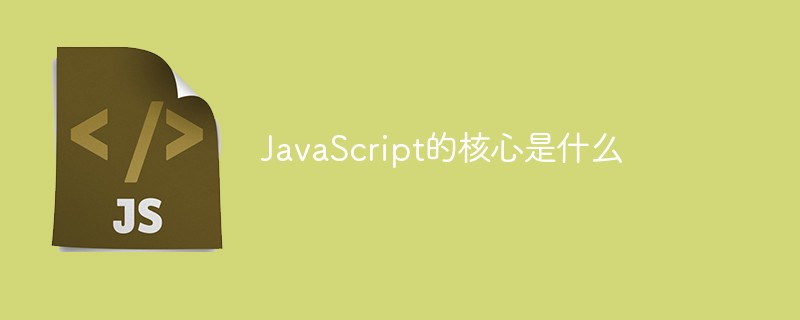Home >Web Front-end >Front-end Q&A >What is the core of JavaScript
What is the core of JavaScript
- 青灯夜游Original
- 2021-10-09 14:08:283263browse
The core of JavaScript is ECMAScript. ECMAScript is a standard scripting language specification that stipulates the syntax, types, statements, keywords, reserved words, operators, objects and other parts of the JavaScript language; simply put, it defines a language (such as JS) What is it like.

The operating environment of this tutorial: windows7 system, javascript version 1.8.5, Dell G3 computer.
Complete JavaScript is composed of the following three parts:
Core (ECMAScript): Provides the syntax and basic objects of the language;
Document Object Model (DOM): Provides methods and interfaces for processing web content;
Browser Object Model (BOM): Provides and interfaces with browsers Methods and interfaces for interaction.
Among them, ECMAScript is the core of JavaScript, describing the basic syntax of the language (var, for, if, array, etc.) and data types (numbers, strings, etc.) , boolean, function, object (obj, [], {}), null, undefined), ECMAScript is a set of standards that defines what a language (such as JS) looks like.
ECMAScript is defined by ECMA-262. ECMAScript is an internationally recognized standard scripting language specification that has no dependency on Web browsers. The ECMA-262 standard mainly stipulates that the language consists of the following components:
Syntax
Variables and data types
Keywords and reserved words
Operators
Control statements
Object
ECMAScript version 5.0 was officially released in 2009. For a long time, JavaScript was used in accordance with the 5.0 standard. In 2015, ECMAScript 6 was released as an official version, officially called ECMAScript 2015. ECMAScript defines all properties, methods and objects of the scripting language. Therefore, you must follow the ECMAScript standard when coding web client scripts.
The latest version of ECMAScript is ECMAScript6 (referred to as "ES6").
[Recommended learning: javascript advanced tutorial]
The above is the detailed content of What is the core of JavaScript. For more information, please follow other related articles on the PHP Chinese website!

